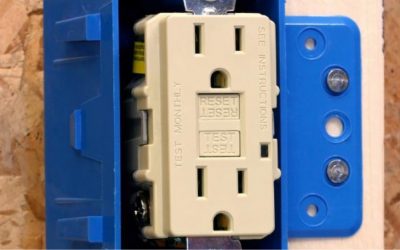Resources
Everyday Electrical Tips & FAQs
Troubleshooting Tips
Many times, this is caused by a tripped circuit breaker. Overloading the circuit by plugging in too many items at once or appliances that draw a large amount of electricity can cause the breaker to trip. If you are comfortable doing so, look in your main electrical panel and see if you can spot which breaker tripped (it should be slightly out of the on position). There should be labels in the box specifying what area of the house is powered by that breaker. Flip that breaker off hard then back on hard. If you can’t tell which breaker tripped, you can turn all of the breakers off hard, then back on hard. A breaker that trips repeatedly indicates too much draw on the circuit or a problem that you should have fixed.
Need a technician to troubleshoot your electrical problems? Contact Us Today!
First, check the simple things. Locate the switch that controls that fixture and cycle it off and back on. If that doesn’t solve the issue, make sure the switch is off and check the bulb. Is the bulb screwed in all of the way? Is the bulb burned out? If that doesn’t solve the issue, check the circuit breaker.
Need a technician to troubleshoot your electrical problems? Contact Us Today!
Do not switch off and on the main breaker in your electrical panel without first switching off branch circuit breakers in the rest of the panel. Only switching off and on the main breaker can cause a power surge with bad consequences. To properly cycle your main breaker, turn off all branch circuit breakers, then turn off your main breaker. When it’s time to turn power back on, turn on your main breaker first, then turn on individual circuit breakers. Learn more about how to turn off power to your home temporarily.
Need a technician to troubleshoot your electrical problems? Contact Us Today!
Look for a GFCI outlet nearby. A Ground Fault Circuit Interupter outlet is required by code in several areas of your home and protects us from receiving shocks due to faults in electrical devices by quickly cutting power to all outlets wired “downstream” from the GFCI outlet. They are sensitive to slight changes in power draw verses input and will occasionally “trip”. They are easily reset by unplugging appliances in that area and pushing the rectangular reset button on the outlet (clearly marked next to the plug-in area).
Need a technician to troubleshoot your electrical problems? Contact Us Today!
Check the plug and make sure it is designed to fit into that outlet.
New outlets are tight, as required by code. Wiggle the plug as you push it in and it should go. Be careful to not touch the metal prongs while doing so.
Need a technician to troubleshoot your electrical problems? Contact Us Today!
Frequently Asked Questions
Yes, we can help with that. Please check if you have existing power in the eave for it and estimate approximately how many linear feet you need to cover.
Contact us today for a free estimate on heat tape installation!
Yes we do. We will need to know what kind of panel you have (there will be label on the main electrical panel). We’ll also need an estimate of how far the work needing done is from your panel and the amp draw of the device you want to power.
Contact us for a free estimate on outlets and circuit breakers today!
Yes we do. Smoke detectors are allowed in bedrooms only, In main areas of the house, you must have a combination smoke/carbon monoxide detector.
Contact us for a free estimate on smoke detector installation today!
Helpful Links
National Fire Protection Association
The leading information and knowledge resource on fire, electrical, and related hazards.
Electrical Safety Foundation International
For all the latest information on electrical safety.
Super D Learning Center
Check out our learning center for helpful tips, resources and frequently asked electrical questions.
How to Turn Off Power to Your Home Temporarily
Winter Electrical Safety Tips: Christmas Lights
Tip Of The Day
Tried these tips and still need help?
No worries, contact us with all of your tough questions!





